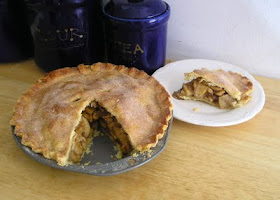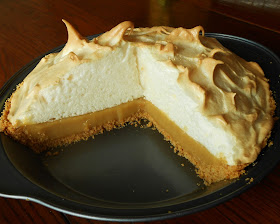As a baker and sometimes cake decorator, I have many frosting recipes that I use depending on what the cake will be used for. Since there is a battle of opinion raging among bakers, pastry chefs, and cake decorators about which buttercreams are best, I wanted to have my own taste test with a group of "Average Joe" Americans. I had about twenty people at my house for the Fourth of July, so I pounced on this opportunity to make them all my guinea pigs. These are the (somewhat surprising) results of my *totally unscientific* taste test:
I offered three of the buttercreams that I use most often. I made them all with no color added, and only vanilla extract as flavoring, so tasters could concentrate on the buttercreams themselves.
Here's a little about each one and what I consider to be their pros and cons:
American Buttercream - a simple butter frosting made from creaming butter with confectioner's sugar and a little milk or other liquid. Vanilla is the common flavoring, but you can use any flavor with it. Some people think that "American Buttercream" is made with shortening instead of butter, but no, that is the stuff you see in grocery store cakes, and who really knows what to call that? American Buttercream is usually the frosting of choice for beginning bakers because it is so easy to make. Various versions of this are also used by many cake decorators because it withstands heat and humidity better than other frostings.
Pros: Easy for anyone to make, holds up well to a moderate amount of heat (can serve a cake outside on a hot day)
Cons: Very sugary, texture always has a bit of grittiness, even after beating it a long time. Sweetness cannot be reduced the way it can in other frostings, since the confectioner's sugar provides the body of this buttercream (although it can be offset somewhat by adding other flavors).
Swiss Meringue Buttercream - A very basic explanation of Meringue buttercreams is that they are made by mixing beaten egg whites with sugar and butter. Italian Meringue Buttercream and Swiss Meringue Buttercream differ in the method used to combine these ingredients, but the result is pretty much the same taste - a buttercream that is airy and light with a silky texture and a rich buttery taste. Usually preferred by Pastry Chefs, Swiss Meringue Buttercream is notoriously difficult to make but it's actually not that hard once you get the hang of it.
Pros: Sophisticated taste appeals to adult taste buds when many other types of frosting are too sweet; texture is nice and light while the flavor is rich and buttery
Cons: Can be kept at room temp but NOT in high heat, so cake decorators need to advise clients that the cake must be refrigerated or at least kept in a cool room (Sometimes this is not possible for every event). The flavor can be too sophisticated - kids often don't like meringue buttercreams.
Cooked Milk Buttercream - This is an old-fashioned frosting that, like seven-minute icing, is rarely used these days. It is made by making a slurry of flour and milk and then cooking this mixture until it thickens. You then add this mixture to a mixture of butter and superfine sugar, which has been creamed for several minutes. Whip until fluffy and what you end up with tastes like a combination of whipped cream and vanilla pudding. This is my personal favorite.
Pros: Sweet enough for kids while also appealing to adult palates. Creamy and light, not gritty
Cons: Does not pipe intricate decorations; does not hold up to high heat
**THE RESULTS**
American Buttercream:
The winner, overwhelmingly, was American Buttercream. I was surprised by this, but I suppose I shouldn't have been. A lot of Americans grew up with this kind of frosting made by their grandmas, so nostalgia factors in heavily here. Very famous bakeries have made their names in large part by cashing in on this nostalgia - It's on Magnolia Bakery's famous cupcakes, as well as Sprinkles cupcakes and countless others.
Surprisingly, some of the things I considered "cons" about this frosting were things that tasters
liked. That slight grittiness and super-sweetness? The heavier texture? All considered
good things by this crowd. What I considered "unsophisticated and child-like" were the very things that brought tasters back to their childhood. BUT it was not unanimous - Although one person said, "This is what frosting should taste like!" one other person said, "Tastes kind of like canned frosting."
Cooked Milk Buttercream:
Second place went to the frosting that had the best of both worlds: Sweet and creamy, light, but not
too light. I actually expected this one to win, but then I am biased. I really love this one. Tasters did really like this one, though it was a bit more popular with adults than kids. Some comments were, "Creamy, Airy. Sweet but not too sweet." Unfortunately, this is not one that can really be used to decorate cakes with intricate decorations, so I only use it for cupcakes and simple layer cakes.
Swiss Meringue Buttercream:
I was really surprised this one didn't do better. I expected it to come in second or maybe even first. I hear so many raves about this frosting from online foodies, and celebrity pastry chefs are always singing the praises of it. I personally love it, but then I like all different kinds of frosting. Kids overwhelmingly pushed this one aside, while adults gave it mixed reviews. Most said it was TOO light and not sweet enough. A few of them said, "This one has no texture to it. Doesn't taste like much" But a couple of people really
liked that it was so light, especially one taster who said she usually doesn't like frosting.
***********
I have to tell you a very puzzling thing about these results: People that had previously liked one kind of frosting (my husband) gave it disparaging remarks in a blind taste test when it was not on an actual cake. And one taster who previously stated that she did NOT like a particular frosting, actually chose it as her FIRST choice in the blind test. One frosting that two people said was "not sweet enough" two other people said was "too sweet." I think people's opinions were also based on which order they tasted the frostings in. If they tasted a really sweet one first, maybe the others seemed bland in comparison.
So apparently in my non-scientific poll, only one thing is clear: everyone has different tastes after all!
Here are links to the Buttercreams I used:
American Buttercream
Swiss Meringue Buttercream
Cooked Milk Buttercream

.JPG)

.JPG)






















.JPG)






.JPG)
.JPG)






.JPG)